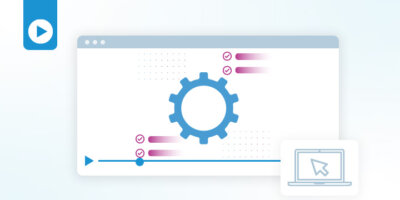Network automation is not a new phenomenon. For years the industry has been automating basic tasks with tools like Perl and Expect scripts and simple point solutions like Solarwinds. This approach worked as for the most part networks didn’t require a high rate of change. All network engineers had to do was make one change at a time in a data center or a campus branch. However, today’s network infrastructure has evolved to support more modern, cloud-first network services, which has significantly increased the complexity of management and skills required to make network changes and basic automation 1.0 tooling simply can’t scale to support it.
Moreover, with the explosion in networking complexity and tooling, comes the explosion of vendors offering automation solutions or services – from pre-packaged platforms to open-source tooling like Ansible and Python, and even equipment vendors that have automation built into their solutions such as SD-WAN controllers. This is making it complex to determine the capabilities your organization needs and how to select the right tool for the right job. As the number of tools that claim to enable network automation only increases, teams are struggling to navigate through the noise of ‘hyperautomation,’ RPAs, and AI to find the right solution that aligns with their desired business outcomes and feature needs.
I’ve met with a lot of network teams during my time at Itential, and I’ve seen a lot of different use cases, situations, challenges, and tech stacks. And every organization has approached network automation from a unique position across various stages of their automation journey. In that time, I’ve seen both successes and failures and want to share that insight to help anyone embarking on getting started with their network automation journey, or who may have selected a network automation 1.0 solution they are limited by, understand what to look for.
Modern day automation and orchestration solutions are game changers, but separating fact from marketing fluff can be confusing. So, here are ten things to ask about an automation solution on your next discovery call or as you and your team evaluate your options. Use these criteria to ensure you’re making the right choice to support your current and future needs.
1. Is automating network infrastructure the core focus of the solution?
Why it matters: This one might sound obvious, but many organizations can lose sight of the core functionality an automation platform promises when they go through an evaluation process. A lot of times, solutions like Business Process Automation (BPA), Robotic Process Automation (RPA), open source, or equipment vendor solutions provide automation but aren’t able to handle the complexity or technology capabilities needed to make network-specific changes confidently. You need a solution that was purpose-built to work with your network-specific systems and build automations across networking domains including SD-WAN and cloud environments.
2. Does the solution support multiple network domains (not just the data center)?
Why it matters: Modern networks span more than just physical domains like data center and campus – they are now inherently multi-domain and multi-vendor – spanning virtual networks, network services, security, SD-WAN, and multi-cloud. Most automation tooling is purpose-built for a specific network domain and before you know it, you have a dozen plus automation tools with different functionality and skills required to manage each. The right automation solution should simplify how you manage your network environment and provide out-of-the-box support for all network types, vendors, and OS types – providing freedom and flexibility without lock-in to automate and orchestrate across your entire infrastructure.
3. Does the solution easily integrate with your entire environment, or does it require a vendor to build it for you?
Why it matters: Making end-to-end network changes requires your automation solution to be integrated with every network and IT system in your ecosystem, to avoid swivel-chairing and eliminate manual hand offs. To understand how an automation solution supports integration ask them when any of your systems or cloud services releases new APIs, how quickly are they made available for your use and consumption? Some automation solutions require heavy custom work with each new release, or even worse – you have to pay more for additional integrations to your systems. You need a solution that can quickly and dynamically adapt to new tools or new API releases, without having to pay an integration tax.
4. Is it flexible enough to work with network and IT systems you adopt in the future?
Why it matters: Similar to integration flexibility, it’s just as important to look for a solution that will adapt to any future technologies you adopt. A lot of proprietary or closed automation solutions lock you into a certain ecosystem, limiting your options when looking to evolve your network infrastructure and reducing the value you’ll see from automation adoption. You need a solution that allows you to maintain your freedom of choice when looking to evolve your network infrastructure, instead of requiring you to invest more when making any changes to your current tooling. This will help you gain immediate value from automation and adapt seamlessly to any new developments in networking.
5. Does the solution require special skillsets to learn and adopt, especially when it comes to end-to-end processes?
Why it matters: When adopting a new solution, it’s critical to understand how your team will be enabled to use it. Do you have to retrain your team to become developers? Do you have to learn a new proprietary model or language? Does it require special skillsets you need to hire for? If the answer is yes to any of those, it will severely slow down the time it takes to get your team onboarded and fully enabled to participate in end-to-end automation. You need a solution that offers out-of-the-box and pre-packaged components that make it easy for anyone on your team to jump in and contribute to network automations – no matter their skillset. Not to mention, it helps increase buy-in and enthusiasm from the network team.
6. Can the solution scale and adapt to support your growth?
Why it matters: Increased demand on your network means increased demand for network automation. A lot of teams realize the limitations of their automation solutions when it’s too late and limits are already reached – they’re stuck trying to figure out how to add more devices, users, integrations, domains, etc. when the solution either doesn’t support what they need or adds significant cost to do so. You need a solution that has proven success in scaling, can handle billions of automations, and can be deployed to scale in your environment.
7. Is the solution delivered as a service, or is it only hosted on-premises?
Why it matters: Most organizations I’ve worked with prefer the as-a-service model because it offloads the management of the network automation solution to the vendor, and not their often-understaffed team. Network automation platforms that only offer fully hosted on-prem solutions can feel similar to managing a firewall application, lacking the footprint most large enterprises need for scale and likely creating technical debt headaches down the line. You need a solution that offers deployment flexibility to meet your specific needs.
8. Can the solution be used with your environment out-of-the-box, or does it require heavy setup and/or customization work?
Why it matters: There’s nothing worse than taking months or even years to fully onboard a new solution as it decreases the return on automation investment. That’s what we’ve seen happen to organizations who chose an automation solution that required customization, heavy set up work, or even reskilling needed to start building automations. You need a tool that users can start building automations right away and isn’t limited to a small number of specialized practitioners but can be used by anyone in your organization.
9. Does it provide support for integration with CI/CD pipelines?
Why it matters: A lot of organizations are looking to adopt modern principles such as CI/CD, a method focused on a “Build, Test, Deploy” process for network infrastructure changes. Most automation solutions don’t offer ways for teams to expose their automations in a way that helps them take advantage of modern principles, making it nearly impossible for network teams to treat their infrastructure as code. You need a solution that evolves with you and can take advantage of CI/CD benefits including northbound integration to be included as part of a pipeline and southbound integration so your automation solution can call a pipeline as part of a workflow.
10. Does the solution enable self-service capabilities via northbound exposure of its API?
Why it matters: The ultimate end state for any networking team is the ability to deliver self-serve automation so that IT teams can take full advantage of the automations built by networking teams. A lot of solutions promise this through APIs, but what organizations who choose these solutions realize later down the line is that many of these APIs are incredibly limiting regarding what you can expose. You need a solution that can expose ALL of its functionality as an API for self-service, not just pre-determined pieces and parts. The ability to expose your automations and deliver network automations as a service to end users is where the true value of automation is seen – the opportunity for consumption is truly infinite.
There you have it — ten criteria that any network automation solution should meet to ensure your investment is worthwhile. For anyone who is part of your organization’s decision process, you’ll find that looking for these capabilities can help quickly select a solution that suits your needs, so you’re not left dealing with the fallout of the wrong choice later down the line.
Want to take a deeper dive into how you evaluate each of these criteria? Get the full evaluation guide here or watch the on-demand webinar here.
Tags: Network Automation





